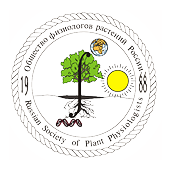Новости науки и практики // Август 2023

New advances in integrating mechanisms of multiple stress response in conifers
The proper response to various abiotic stresses is essential for plants’ survival to overcome their sessile nature, especially for perennial trees with very long-life cycles. However, in conifers, the molecular mechanisms that coordinate multiple abiotic stress responses remain elusive.
https://www.eurekalert.org/news-releases/996035
Analogous to algae: scientists move toward engineering living matter by manipulating movement of microparticles
A team of scientists has devised a system that replicates the movement of naturally occurring phenomena, such as hurricanes and algae, using laser beams and the spinning of microscopic rotors. The breakthrough, reported in the journal Nature Communications, reveals new ways that living matter can be reproduced on a cellular scale.
https://www.eurekalert.org/news-releases/995463
Cellular process that fuels plant growth yields surprising insights
Before it is mature enough to perform photosynthesis, a developing Arabidopsis thaliana seedling relies on the reserve of fats stored inside its cells in protein-coated pouches known as lipid droplets. The energy-rich contents of these droplets are mobilized in intracellular containers called peroxisomes. The new study found that this collaboration requires an enzyme on the peroxisome that helps break down the protein coating on the lipid droplets. The enzyme ⎯ MIEL1 ⎯ was previously known to reside in the cell nucleus, where it helps regulate gene expression.
https://www.eurekalert.org/news-releases/995347
Roots are capable of measuring heat on their own, new study shows
Plant roots have their own thermometer to measure the temperature of the soil around them and they adjust their growth accordingly. Through extensive experiments, a team led by Martin Luther University Halle-Wittenberg (MLU), was able to demonstrate that roots have their own temperature sensing and response system. In a new study in The EMBO Journal, the scientists also provide a new explanation for how roots themselves detect and react to higher temperatures. The results could help develop new approaches for plant breeding.
https://www.eurekalert.org/news-releases/994994
New insight into how plant cells divide
Every time a stem cell divides, one daughter cell remains a stem cell while the other takes off on its own developmental journey. But both daughter cells require specific and different cellular materials to fulfill their destinies. Animal stem cells use the cytoskeleton – a transient network of structural tubules – to physically pull the correct materials from the parent cell into each daughter cell during the split. Plants also have stem cells that need to distribute different materials to each of their daughters, but earlier studies seem to have ruled out an “animal-style” cytoskeleton to accomplish this task. And what plants used instead remained elusive – until now.
https://www.eurekalert.org/news-releases/994809
Programming bacteria for multiplexed DNA detection
DNA is a universal and programmable signal of living organisms. Here we develop cell-based DNA sensors by engineering the naturally competent bacterium Bacillus subtilis (B. subtilis) to detect specific DNA sequences in the environment.
https://www.nature.com/articles/s41467-023-37582-x
Helping plants make better use of sunlight
Plants use photosynthesis to produce oxygen, nutrients and bioenergy. But this complex biochemical process is inefficient, with only a fraction of the sun's energy actually being utilized in photosynthesis. Researchers want to change this in order to help increase the yield of cultivated crops. A research team in Munich has now discovered that the outer envelope membrane of chloroplasts could play a key role in this process.
https://www.eurekalert.org/news-releases/994618
Investigating the intricacies of auxin signaling mechanisms in algae
Phytohormones are chemical messengers that regulate the growth of plants and their response to the environment. In land plants, auxin is an important and well-studied phytohormone that affects various aspects of plant development. However, the main cell receptor that regulates the auxin signaling machinery in land plants—transport inhibitor response 1/auxin signaling F-box (TIR1/AFB)—is absent in algae. Past research has shown that a TIR1/AFB-independent auxin signaling mechanism may be involved in regulating the gene expression and growth in algae. However, not much is known about the underlying mechanisms of the auxin signaling pathway and their purpose in algae.
https://www.eurekalert.org/news-releases/993628
Light conveyed by the signal transmitting molecule sucrose controls growth of plant roots
Researchers shows how information about the quantity of absorbed light passes from the leaves to the roots. Photosynthetic sucrose not only supplies roots with carbohydrates but also acts as a signal transmitter for light-dependent root architecture.
https://www.sciencedaily.com/releases/2023/05/230530174307.htm
How plants use sugar to produce roots
Heidelberg biologists identify the molecular mechanism that controls root branching.
https://www.sciencedaily.com/releases/2023/05/230522131318.htm
Small genome size and variation in ploidy levels support the naturalization of vascular plants but constrain their invasive spread
Using 11 049 species, Pyšek et al. tested the effects of genome size and ploidy levels on plant naturalization (species forming self-sustaining populations where they are not native) and invasion (naturalized species spreading rapidly and having environmental impact).
https://nph.onlinelibrary.wiley.com/doi/epdf/10.1111/nph.19135
Cytokinin activity – transport and homeostasis at the whole plant, cell, and subcellular levels
Cytokinins (CKs) are important plant hormones that regulate a variety of biological processes implicated in plant development and stress responses. Hu & Shani summarize the most recent advances in discovering and characterizing the membrane transporters involved in long- and short-distance translocation of CKs and their significance in CK signal activity.
https://nph.onlinelibrary.wiley.com/doi/10.1111/nph.19001?utm_source=substack&utm_medium=email
Seven plant capacities to adapt to abiotic stress
This review distinguishes seven inherent capacities that enable plants to respond to abiotic stresses and continue growing, although at a reduced rate, to achieve a productive yield. These are the capacities to selectively take up essential resources, store them and supply them to different plant parts, generate the energy required for cellular functions, conduct repairs to maintain plant tissues, communicate between plant parts, manage existing structural assets in the face of changed circumstances, and shape-shift through development to be efficient in different environments.
Plant Environmental Memory: Implications, Mechanisms, And Opportunities For Plant Scientists And Beyond
Auge et al. summarize recent advances in the understanding of plant memory, discuss the ecological requirements for its evolution, outline the multilayered molecular network and mechanisms required for accurate and fail-proof plant responses to variable environments, point out the direct involvement of the plant metabolism and discuss the tremendous potential of various types of models to further our understanding of the plant's environmental memory.
https://academic.oup.com/aobpla/article/15/4/plad032/7190690?utm_source=substack&utm_medium=email
How a mysterious protein plays a crucial role in plant growth
Professor Magdalena Bezanilla and senior research scientist Shu-Zon Wu, along with researchers from the University of Rhode Island, discovered how a somewhat mysterious protein known as cellulose synthase-like D, or CSLD, plays a crucial role in plant growth and is likely a generator of cellulose, which is the main structural component of all plants.
Plants can distinguish when touch starts and stops
Even without nerves, plants can sense when something touches them and when it lets go, a Washington State University-led study has found.
https://phys.org/news/2023-05-distinguish.html?utm_source=substack&utm_medium=email
How a fungus sidesteps a plant's defense mechanism
RIKEN scientists have discovered how a parasitic fungus renders harmless a powerful anti-fungal compound produced by some plants. As well as providing a fascinating glimpse into the ongoing arms race between plants and parasites, the finding could be useful for developing new therapies for people.
The good, the bad, and the phosphate: regulation of beneficial and detrimental plant–microbe interactions by the plant phosphate status
Paries and Gutjahr review how the PSR pathway is involved in the regulation of genes that promote formation and maintenance of AM symbiosis.
https://nph.onlinelibrary.wiley.com/doi/10.1111/nph.18933?utm_source=substack&utm_medium=email
cis-Regulatory Elements in Plant Development, Adaptation, and Evolution
cis-Regulatory elements encode the genomic blueprints that ensure the proper spatiotemporal patterning of gene expression necessary for appropriate development and responses to the environment. Although a comprehensive understanding of cis-regulatory mechanisms in plants has lagged behind that in animals, we showcase several breakthrough findings that have profoundly influenced plant biology and shaped the overall understanding of transcriptional regulation in eukaryotes.
The integration of reactive oxygen species (ROS) and calcium signalling in abiotic stress responses
This review discusses the proteins that may serve as nodes or connecting bridges between the different pathways during abiotic stress responses, highlighting the crosstalk between ROS and Ca2+ pathways in cell signalling. Ravi et al. consider putative molecular switches that connect these signalling pathways and the molecular machinery that achieves the synergistic operation of ROS and Ca2+ signals.
https://onlinelibrary.wiley.com/doi/10.1111/pce.14596?utm_source=substack&utm_medium=email
Новости
Новости науки и практики // Апрель 2024
Обзор научных новостей, опубликованных во всемирной паутине за последний месяцФосфорилирование плазматической мембраны H+-АТФазы Thr881 (треонин) участвует в светоиндуцированном открывании устьиц
Ученые из Университета Нагои (Nagoya University) и Института трансформирующих биомолекул (WPI-ITbM) обнаружили новый ...Научная конференция «Photosynthesis and Hydrogen Energy Research for Sustainability – 2024»
Приглашаем Вас принять участие в XII международной научной конференции


Объявления
Записей не найдено.



